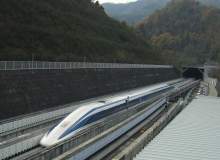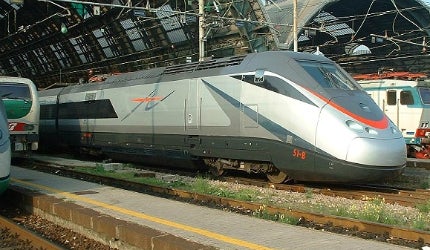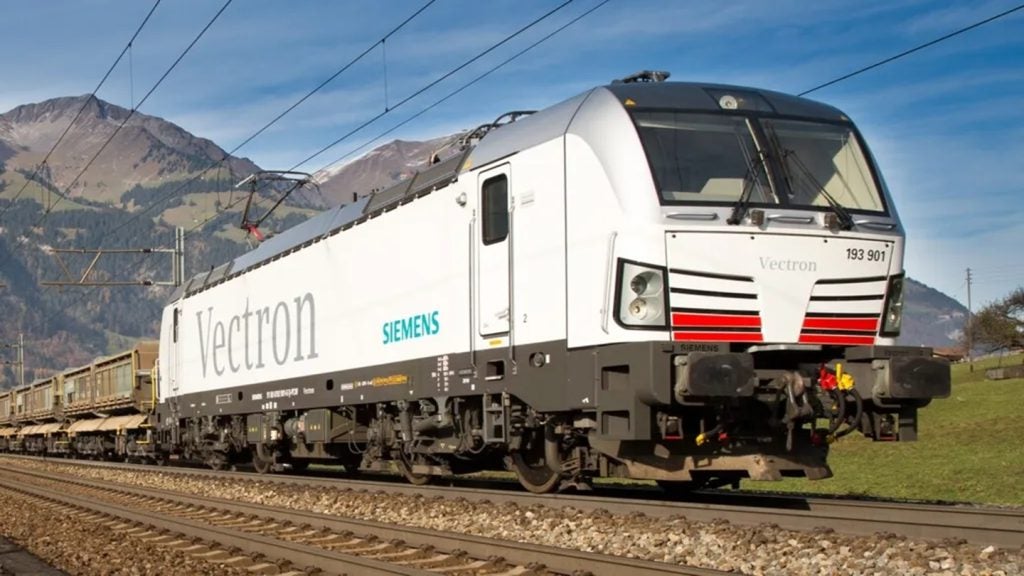

Originally planned to be operational in time for the 2016 Olympic Games, Brazil’s $16.5bn Trem de Alta Velocidade (TAV) high-speed rail project has so far been struggling to even get out of the starting blocks. Over the past few years, the project’s numerous false starts have led to speculation that Brazil’s high-speed ambitions have withered and died on the vine.
But earlier this month, the Brazilian Government resurrected its plan to build a new high-speed line from Rio de Janeiro to Campinas via São Paulo, Brazil’s largest city.
The bidding for the manufacturing of trains and the operation of the 511km high-speed line is set to begin in May 2013, with the contract for building the project’s tracks, stations and other infrastructure split off into a separate contract, reportedly scheduled for bidding in early 2014.
However, after the project’s failure to attract bids from the private sector on three separate occasions during the last few years, there’s still a shadow looming large over TAV’s prospects. Without any high-speed rail expertise or experience of its own, Brazil is relying on major investment from high-speed specialists from countries such as Spain, Germany, France, South Korea or Japan, to provide the technology transfer necessary to push the project forward.
So what’s been keeping the private sector, usually so quick to bid for major infrastructure projects like this, so reticent? On the most fundamental level, potential bidders are sceptical that the project can be built for the $16.5bn that Brazil has proposed, and the government has previously stipulated that the burden of cost overruns will fall to the project’s major contractors.
How well do you really know your competitors?
Access the most comprehensive Company Profiles on the market, powered by GlobalData. Save hours of research. Gain competitive edge.

Thank you!
Your download email will arrive shortly
Not ready to buy yet? Download a free sample
We are confident about the unique quality of our Company Profiles. However, we want you to make the most beneficial decision for your business, so we offer a free sample that you can download by submitting the below form
By GlobalDataWith the line’s route passing through mountainous regions and supporting infrastructure such as roads and highways in relatively poor condition, costs will almost certainly escalate at a rapid rate. An estimated 90km of tunnels and more than 100km of bridges and viaducts add to the project’s complexity.
As well as concerns about the project’s upfront costs, doubts have also been raised about the projected ridership of the completed TAV line. According to official estimates, the line will serve 33 million passengers in its first year of operation, rising to 100 million by 2030. But with the service’s cheapest one-way tickets priced at 200 reais (nearly $100, or a quarter of Brazil’s monthly minimum wage), the TAV will be financially out of the question for most of Brazil’s population, leaving a lot of pressure on the country’s white-collar workers to make up the necessary numbers.
So if the project’s calls for tenders have previously fallen on deaf ears, what has changed in its latest attempt to attract foreign contractors?
Well, Brazil’s National Agency of Terrestrial Transport (ANTT) a few months ago acknowledged the financial risks for companies coming on to the project, offering to help shoulder the risk of cost overruns with public money, as well as finance 60% of the value of the contract.
Splitting the contract work into two sections could also help the project get off the ground, allowing the lower-risk train manufacturing contract to get underway first. This means that ANTT would launch its second call for bids once the project is already underway, providing some much-needed legitimacy when the higher-risk construction contract bids are sought in 2014.
The difficulty Brazil has experienced in finding foreign investors for its high-speed project underlines the challenges involved in planning a high-speed rail project of any kind, let alone one as complex as TAV taking place in a country with little to no domestic expertise.
It remains to be seen how the project progresses and how it performs once completed, but with more favourable contract terms now on the table and interest being shown by Siemens and Spanish manufacturers Ineco and Renfe, things might finally be looking up for a project that once seemed destined for the political back-burner.
What do you think of Brazil’s high-speed project and its chances of success? Get in touch with Chris and let him know: chrislo@nridigital.com
Related content
Rio de Janeiro Metro, Brazil
Rio de Janeiro Metro, also referred to as Metro Rio, is a partially underground railway network that was launched for operations in 1979. The network has two lines and serves half a million travellers each day.
São Paulo Metro, Brazil
São Paulo is the fourth-largest city in Brazil with a population of 20 million. Currently, the metro system carries 4.2 million passengers every day. This number is expected to increase to six million passengers a day by 2014.
Rail at Rio+20: sustainable transport in the cities of the future
Sustainable development is in the spotlight at Rio+20, and a greater emphasis on rail transport will play a major role. Chris Lo takes stock of the biggest rail and public transport announcements coming out of this landmark UN event, including the part rail has to play in developing the sustainable cities of the future.
The world’s most advanced high speed rail projects
Despite a hostile economic climate, many developers are moving ahead with the next generation of high-speed rail lines.







